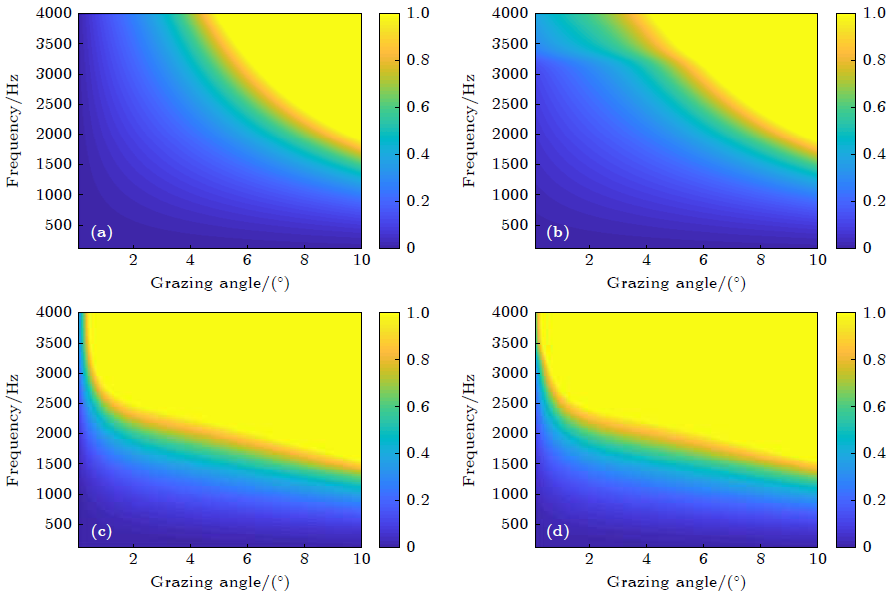The perfect reflection of the flat sea surface in the ideal condition to the incident sound wave does not introduce reflection loss. However, the sea surface is usually rough due to the wind. Wind-generated rough sea surface has not only reflection effect but also scattering effect on the sound wave.
Moreover, the wind-generated bubbles layer also affects the sound propagation significantly. On the one hand, the bubbles layer could change the sound speed profile and result in the refraction of the incident sound wave. On the other hand, it has scattering effect and absorption effect on the incident sound wave and leads to the sound wave to attenuate.
As a consequence, the rough sea surface and the bubbles layer are two main factors affecting the sound propagation in the windy weather at sea. Researchers have paid much attention to the effect of the wind-generated rough sea surface on the sound propagation, but few of them have considered the effect of the wind-generated bubbles layer on the sound propagation.
Recently, researchers from the Institute of Acoustics of the Chinese Academy of Sciences (IACAS) carried out a research on the effects of wind-generated bubbles layer on sound propagation underneath rough sea surface in shallow water.
The research was published online in Acta Physica Sinica.
Based on the Ramsurf sound propagation model under the rough sea surface, the researchers analyzed the effects of wind-generated bubbles layer underneath rough sea surface on reflection loss and sound propagation with different wind speeds. They also modified the sound speed profile in the bubbles layer based on the Hall-Novarini bubbles population model and calculated the attenuation coefficient due to scattering and absorption of the bubbles layer.
The simulation results showed that when the wind speed was 10 m/s, the effect of the bubbles layer on reflection loss was significant with the frequencies higher than 2 kHz.

Figure 1. Effects of the bubbles layer underneath the rough sea surface on reflection loss in nepers with a wind speed of 10 m/s: (a) rough sea surface; (b) rough sea surface + scattering and absorption effect of the bubbles layer; (c) rough sea surface + refraction effect of the bubbles layer; (d) rough sea surface + scattering, absorption and refraction effect of the bubbles layer. (Image by IACAS)

Figure 2. Effects of the bubbles layer underneath the rough sea surface on reflection loss in nepers with a wind speed of 13 m/s: (a) Rough sea surface; (b) rough sea surface + scattering and absorption effect of the bubbles layer; (c) rough sea surface + refraction effect of the bubbles layer; (d) rough sea surface + scattering, absorption and refraction effect of the bubbles layer. (Image by IACAS)
In the given underwater acoustic environment with the frequency of 3 kHz and both the source depth and the receiver depth were 7 m, the enhancement of the transmission loss due to the bubbles layer was 2.6 dB when the wind speed was 13 m/s. While the enhancement was 8.1 dB when the wind speed was 16 m/s. In the environment with both the source depth and the receiver depth were 18 m, the enhancement of the transmission loss due to the bubbles layer was 2.5 dB when the wind speed was 13 m/s and the enhancement was 4 dB when the wind speed was 16 m/s.

Figure 3. Comparison of the transmission loss curves with different wind speeds (the source depth and receiver depth were both 18 m): (a) v = 7 m/s; (b) v = 10 m/s; (c) v = 13 m/s; (d) v = 16 m/s. (Image by IACAS)
The sound propagation calculating method put forward by this research could provide model basis for the sound field prediction with wind-generated rough sea surface and bubbles layer. The simulation results might provide information for target localization and underwater acoustic environment monitoring.
Reference:
YAO Meijuan, LU Licheng, SUN Bingwen, GUO Shengming, MA Li. Effects of wind-generated bubbles layer on sound propagation underneath rough sea surface in shallow water. Acta Physica Sinica, 2020, 69(2): 024303. DOI: 10.7498/aps.69.20191208.
Contact:
ZHOU Wenjia
Institute of Acoustics, Chinese Academy of Sciences, 100190 Beijing, China
E-mail: media@mail.ioa.ac.cn


